In today’s digital landscape, where the internet is the go-to source for information and businesses strive to establish their online presence, mastering the art of SEO-friendly blog writing is paramount. Search Engine Optimisation (SEO) plays a pivotal role in determining a website’s visibility on search engine results pages (SERPs), making it crucial for bloggers and content creators to understand and implement SEO strategies effectively.
Let’s explore the key elements of SEO-friendly blog writing, empowering you to craft content that not only engages readers but also ranks high on search engines.
Understanding SEO Basics
To embark on a journey towards SEO-friendly blog writing, it’s essential to grasp the fundamental concepts of SEO. Search engine optimisation involves a series of techniques and strategies aimed at improving a website’s visibility on search engines like Google, Bing, and Yahoo. These strategies include optimising content for specific keywords, ensuring a website’s technical aspects are up to par, and building high-quality backlinks.
SEO experts can offer invaluable insights into how to tailor your content for local audiences while optimising it for broader visibility.
When crafting your blog posts, consider the relevance of local SEO. If your blog caters to a specific geographical area or you operate a local business, incorporating location-specific keywords can help you connect with your target audience more effectively.
For instance, if you’re a coffee shop owner in Melbourne, using keywords like “best coffee in Melbourne” can attract local customers searching for your services. This alignment between your content and the local audience’s needs is a cornerstone of successful SEO-friendly writing.
Keyword Research and Implementation
One of the primary pillars of SEO-friendly blog writing is keyword research. Keywords are the terms and phrases that users type into search engines when seeking information. Identifying the right keywords for your content is akin to finding the key that unlocks the door to higher search engine rankings. To start, brainstorm topics related to your blog niche and generate a list of potential keywords.
For example, if you’re a digital marketing agency in Melbourne offering affordable SEO services, your keywords could include — digital marketing services, Melbourne SEO agency, and local SEO strategies.
Utilise online keyword research tools like Google Keyword Planner or SEMrush to determine the search volume and competition for these keywords. Once you’ve selected your keywords, strategically incorporate them into your blog post’s title, headings, and throughout the content while ensuring it reads naturally and doesn’t appear forced.
High-Quality Content Creation
Creating high-quality, informative, and engaging content is paramount in the world of SEO-friendly blog writing. Search engines prioritise content that provides value to users. Thus, focus on crafting articles that answer questions, solve problems, or entertain readers.
In the context of digital marketing services, your blog can offer insights into the latest trends, case studies, or actionable tips for businesses looking to improve their online presence.
Additionally, ensure your content is well-structured. Use headings and subheadings to break down your blog into easily digestible sections, making it more appealing to both readers and search engines. Incorporate multimedia elements like images, infographics, and videos to enhance the user experience.
By delivering comprehensive and visually appealing content, you can keep your audience engaged and encourage them to spend more time on your website, a factor that search engines consider when ranking pages.
On-Page SEO Techniques
While content quality is critical, on-page SEO techniques are equally essential for SEO-friendly blog writing. On-page SEO involves optimising various elements within your blog post to enhance its search engine visibility. Elements to focus on include:
Meta Titles and Descriptions: Craft compelling meta titles and descriptions that include your target keywords to entice users to click on your link when it appears in search results.
URL Structure: Create user-friendly and descriptive URLs that incorporate your keywords. Avoid long, convoluted URLs that can deter both search engines and users.
Internal and External Links: Incorporate relevant internal links to other pages on your website and external links to authoritative sources. This helps search engines understand your content’s context and authority.
Mobile Optimisation: Ensure your blog is mobile-friendly, as search engines prioritise mobile-responsive websites, especially in today’s mobile-driven world.
Page Speed: Improve your website’s loading speed, as slow-loading pages can negatively impact your SEO rankings and user experience.
Implementing these on-page SEO techniques will not only make your blog posts more appealing to search engines but also improve the overall user experience on your website, a factor that can indirectly boost your search engine rankings.
Consistency and Monitoring
SEO-friendly blog writing is an ongoing process that requires consistency and monitoring. Regularly publish fresh, relevant content to keep your audience engaged and attract new visitors. Create an editorial calendar to plan your content and ensure it aligns with your target keywords and audience’s needs.
Moreover, use tools like Google Analytics and Google Search Console to monitor your blog’s performance. Track key metrics like organic search traffic, click-through rates, and keyword rankings. This data will provide insights into what’s working and where you can make improvements. An SEO expert in Melbourne can assist in analysing this data and making data-driven decisions to enhance your blog’s SEO performance.
Mastering the art of SEO-friendly blog writing is essential for anyone looking to succeed in the competitive online landscape. By understanding SEO basics, conducting thorough keyword research, creating high-quality content, implementing on-page SEO techniques, and maintaining consistency, you can elevate your blog’s visibility on search engines.
Remember, the world of SEO is ever-evolving, so staying informed about the latest trends and algorithm updates is crucial for sustained success in the realm of digital marketing services.
FAQs on SEO-Friendly Blog Writing
SEO-friendly blog writing involves creating content that is optimised for search engines, making it more likely to rank higher on search engine results pages (SERPs). It’s important because it helps drive organic traffic to your website, increases your online visibility, and attracts potential customers or readers to your blog.
Start by brainstorming topics related to your niche, and then use keyword research tools like Google Keyword Planner or SEMrush to identify relevant keywords. Look for keywords with a balance of search volume and manageable competition. These keywords should be strategically integrated into your blog content.
While it’s not mandatory, hiring an SEO expert, especially one experienced in local SEO, can be beneficial. They can provide valuable insights, help you optimise content effectively, and monitor your blog’s performance using data-driven strategies, ultimately improving your blog’s SEO success.
Content quality is paramount in SEO-friendly blog writing. High-quality content not only engages readers but also satisfies search engine algorithms, which prioritise valuable and informative content. Quality content leads to longer page visits, reduced bounce rates, and higher search engine rankings.
Maintaining consistent SEO performance requires a few key practices. Regularly update and publish fresh content, monitor your blog’s analytics using tools like Google Analytics, and stay informed about industry trends and algorithm updates. This proactive approach will help you adapt to changes and sustain your blog’s SEO success.
Hand Picked Articles
- How Consistent Blog Posts Help Your Website Health?
- How Can Instagram Marketing Help Your Business Grow?
- Transform Your Start-Up into a Successful Venture with Affordable SEO Services
- Digital Marketing Consultants for Tradesmen Boosting Your Tradie Business Online
- Why Is Digital Marketing Important for the Healthcare Industry?















